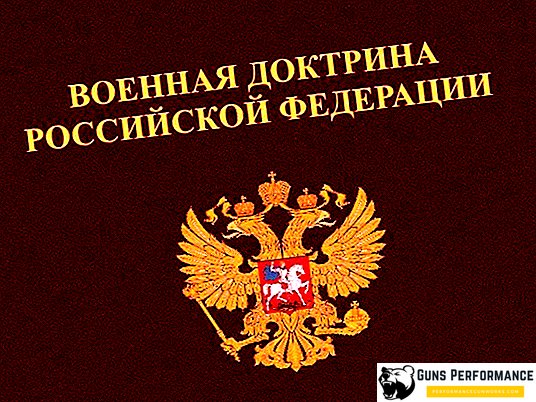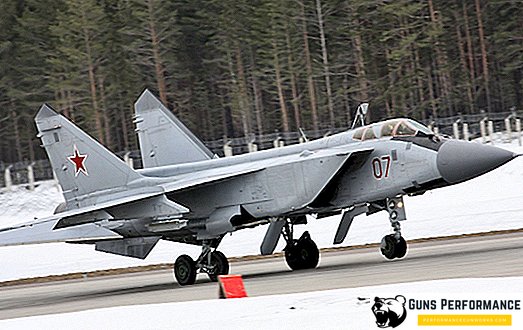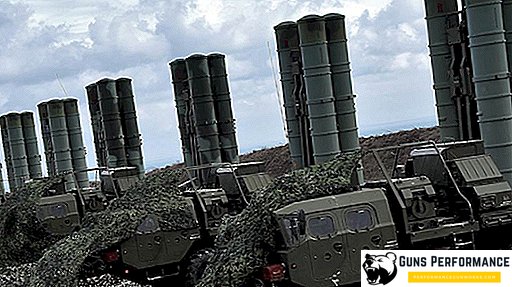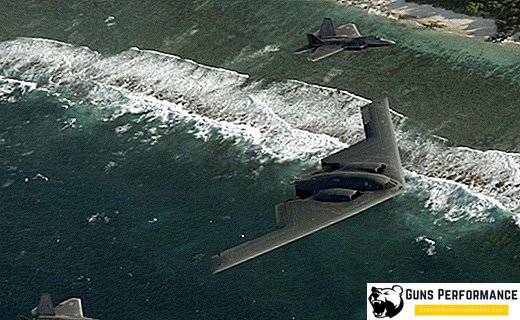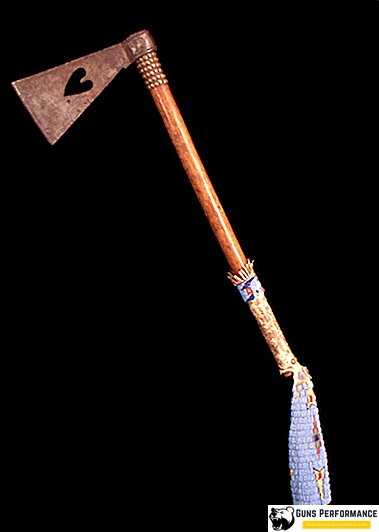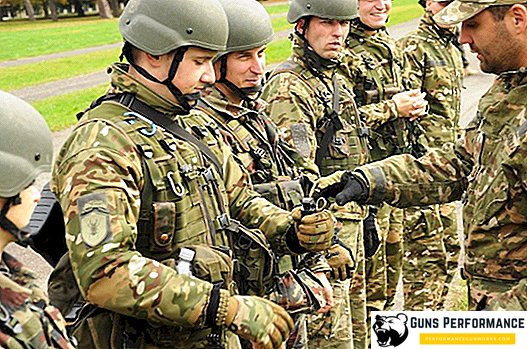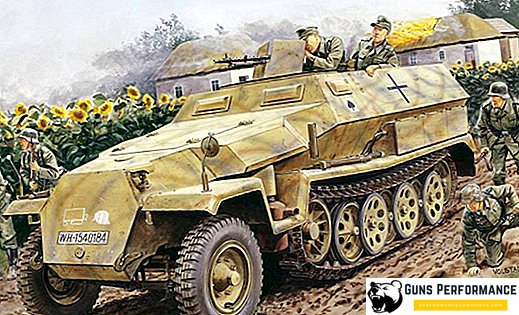
In the German concept of a lightning war, which was significantly supplemented in the 30s of the last century, much attention was paid to the mobility of infantry units.
One of the prominent German theorists of the use of tank forces, General Guderian, in his classic work "Attention, tanks!" He described the functions of the infantry in the coming war: "The task of the infantry is to immediately use the effect of a tank attack to quickly advance and develop success."
This quotation shows that the German commanders clearly understood that the use of tanks would not be effective without a powerful infantry cover. However, the problem immediately arose of how to increase the mobility of infantry to the level of tank units.
In Germany, there is a machine-building company Hanomag (Hannoversche Maschinenbau AG), which will soon be 150 years old. Throughout its history, she was involved in the production of cars and trucks, tractors and locomotives. Citizens of the former USSR always associated the name Hanomag only with the Great Patriotic War, or rather, with two models of equipment that were made at the factories of this company: with the SdKfz 250 and SdKfz 251 armored personnel carriers. These machines became a real business card with the MP-40 submachine gun. ground forces of Nazi Germany.

The German BTR "Khanomag" (or "Ganomag") was indeed a mass vehicle, which was actively used throughout the war, including on the Eastern Front. All were released 15252 armored personnel carriers Hanomag SdKfz 251 and 7326 units SdKfz 250. These cars were the real "workhorses" of the Wehrmacht they were used not only to transport infantry units, but also for the evacuation of the wounded, transporting artillery pieces and mortars, the transport of munitions, of Intelligence , as staff machines and communication machines. On the basis of these armored personnel carriers were created self-propelled artillery and anti-aircraft installations. A large number of modifications were developed for each of the armored personnel carriers.
The Germans not only used the "Hanomagi" themselves, but also supplied (in small quantities) them to their allies. After the war, the production of these armored vehicles was established by the Czechs, it was in service with the army of Czechoslovakia until the mid-80s.
The SdKfz 250 and SdKfz 251 armored personnel carriers were distinguished by high reliability and excellent maneuverability. The most massively they were used on the Eastern Front and in Africa, that is, where the German army most had to deal with bad roads. They were used with pleasure not only by the Wehrmacht soldiers: the Hanomag armored personnel carrier was the favorite command post of Field Marshal Rommel, the commander of the African corps.
By the way, the name "Khanomag" is completely Soviet, in German documents this armored personnel carrier was never called that.

The history of the creation of Hanomag: SdKfz 250 and SdKfz 251
Active use of vehicles for the transportation of infantry began during the First World War. A little later, the British based the tank base Mk I created the world's first armored personnel carrier, whose mission was not only to deliver soldiers to the front line, but also to support them with fire on the battlefield. In the period between the world wars, the issue of escorting tanks and infantry support was attempted in different ways. In the USSR, they were actively engaged in the creation of armored vehicles armed with cannons and machine guns. The usual tactics of the Red Army was the so-called tank assault, when a group of infantry was simply placed on the tank's armor.
The Germans went a little different way: having a powerful tractor and automobile industry, they started developing armored personnel carriers. The first models of German semi-tracked vehicles appeared during the First World War. Having a higher permeability compared with conventional wheeled vehicles, they were used to transport infantry, artillery guns and other army goods. In 1919, as an experiment on a semi-tracked tractor "Kraftprotse" armor protection was installed, then he was transferred to the police of the Weimar Republic.

Later, the armored personnel carriers began installing weapons: a 37-mm KwK L / 70 cannon and a 7.92-mm machine gun were mounted on the Rheinmetall-Borsig artillery tractor. In 1934, the HK 600p semi-tracked artillery tractor was put into service the following year.
In the mid-1930s, the development of semi-tracked armored personnel carriers based on artillery tractors began in Germany. On the basis of the mono-colored Sd.Kfz.10 and three-tonne Sd.Kfz.11 chassis, the Bdr Sd.Kfz.250 and Sd.Kfz.251 were created respectively.
Work on Sd.Kfz.251 led the company Hansa-Lloyd from Hamburg, after their successful completion of the patent for the car was bought by the Hanover company Hanomag. She was engaged in manufacturing the undercarriage of the new BTR, armored corps was supplied by Bussing, and final assembly was carried out at other enterprises.
The first prototypes of the "Hanomag" appeared in 1936, and new equipment began to arrive in the army in early 1939.
At the end of the thirties, the Armament Directorate prepared a technical task for the development of a light armored vehicle on a semi-tracked chassis. The new machine was supposed to supplement Sd.Kfz.251, which were already mass-produced at that moment.
Work on the new armored personnel carrier was completed already during the war (in 1940), and in 1941 Sd.Kfz.250 began to enter the army. During serial production more than ten modifications of this semi-tracked armored car were created.
Sd.Kfz.251
The Sd.Kfz.251 BTR had an open armored hull consisting of a framework on which armored plates were fastened with the help of bolts. They had a significant slope and thickness from 6 to 14 mm (frontal part). In front of the hull was the engine compartment, behind it was located the control compartment, and in the back of the machine were paratroopers.
In the engine compartment was the engine, fuel tank and wheel control system. Immediately behind him were the places of the commander and driver, from the engine compartment separated by a fire wall. To control the "Hanomagom" driver used the steering wheel, standard pedals and gearshift lever. The Sd.Kfz.251 department of management had a roof, on some modifications of the vehicle the place of the commander was not near the driver, but in its rear part.

In the fighting compartment, benches for infantrymen were installed under both walls, on the fences there were boxes with equipment and spare parts. On the walls were provided mounts for paratroopers personal weapons. To protect against bad weather, the fighting compartment of the vehicle could be covered with a canvas awning from above. Landing was carried out through the double door, located at the stern of the machine. There were no loops in the hull, the fighters could fire over the sides.
German armored personnel carrier "Hanomag" was equipped with a carburetor engine Maybach HL 42 TURKM with six cylinders and a capacity of 100 liters. with. The radiator of the cooling system was located in front of the cylinder block in the nose of the machine. The Hanomag BTR had a planetary-type transmission, with four gears forward and one back.
A distinctive feature of armored "Khanomag" was their undercarriage. To control the machine used wheels that were in its nose. The caterpillars provided the Khanomag with high throughput. The advantage of this scheme was its comparative simplicity (friction and onboard transmissions were not needed), while preserving the merits of the tracked chassis.
In most cases, the rotation of an armored personnel carrier was carried out with the help of a steering mechanism, as on an ordinary car. Only on too sharp turns (more than 15 degrees) it was necessary to brake one of the tracks.
The BTR Sd.Kfz.251 suspension was mixed: the wheel axle had a leaf spring, and the tracked part was independent torsion bar. The armored personnel carrier had three rows of road wheels on each side: the outer row consisted of three rollers, the middle row consisted of six, and the inner row also included three rollers. Rear track rollers were guides, and front - leading.

Standard armament "Hanomag" consisted of a 7.92-mm MG 34 machine gun, covered with an armor shield. It was installed above the department of management. If desired, the machine gun could be rearranged on the swivel, located at the stern. In this case, the fire could be conducted on air targets.
The armored personnel carrier had a large number of modifications, which had some differences in design and armament. The main modifications were Ausf. A, B, C and D, besides them, there were 23 more highly specialized versions of the machine.

Sd.Kfz.250
Sd.Kfz.250 was launched into serial production a little later than the BdR Sd.Kfz.251, the design of these two machines is very much in common. They have the same layout and layout, both armored personnel carriers were equipped with the same Maybach HL 42 TURKM engine.
The latter circumstance led to a somewhat higher specific power Sd.Kfz.250. It belonged to light semi-tracked armored personnel carriers, weighed 5.8 tons (instead of 9.14 tons for Sd.Kfz.251), its body was somewhat narrower and shorter than that of Sd.Kfz.251.
Sd.Kfz.250 had two variants of the hull design: old (alt) and new (neu), the last of which was somewhat simpler. Like its more massive counterpart, the Sd.Kfz.250 had an armored hull, an open troop compartment and a crew of two.

Usually Sd.Kfz.250 was used to transport half of the infantry compartment. The armored carrier had more than ten modifications. The main armament of the standard modification of the machine was the MG 34 machine gun with a shield.
The tracked part of the chassis consisted of five road wheels on each side.
On the basis of the standard modification, machines were developed for performing various functions: a communication vehicle that could be equipped with various types of radio stations, a self-propelled mortar with an 81-mm mortar installed in the middle of the troop compartment, an ammunition transportation vehicle. You can also note a modification, armed with a light cannon Kwk 37 or anti-tank version with a 37-mm gun.
On the basis of Sd.Kfz.250, several reconnaissance vehicles, an armored personnel carrier to adjust the fire, and a communication cable stacker in the front-line zone were created.
Hanomag features: SdKfz 250 and SdKfz 251
| Title | SdKfz 251 | SdKfz 250 |
| Year of release, year | 1939 | 1940 |
| Total produced, pcs. | 15252 | 7326 |
| Mass, t | 9.14 tons | 5,8 |
| Crew, pers. | 2+10 | 2+4 |
| Height, m | 2,25 | 1,66 |
| Width, m | 2,15 | 1,95 |
| Length m | 5,76 | 4,56 |
| Armament | one or two 7.92 mm MG 34 | |
| Engine | Maybach HL 42TKRM | |
| Power, l. with. | 100 l. with. | |
| Speed km / h | 50 | 76 |
| Power reserve, km | 275 | 320 |




